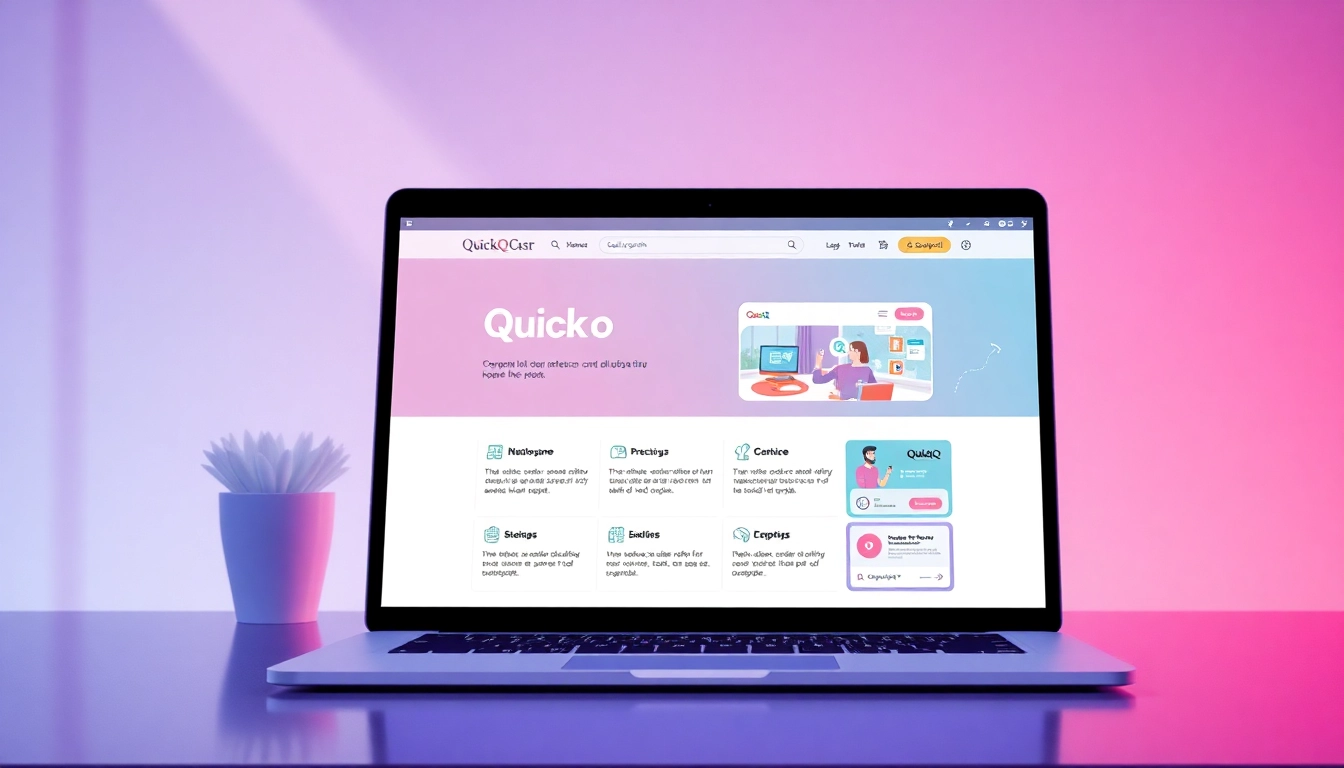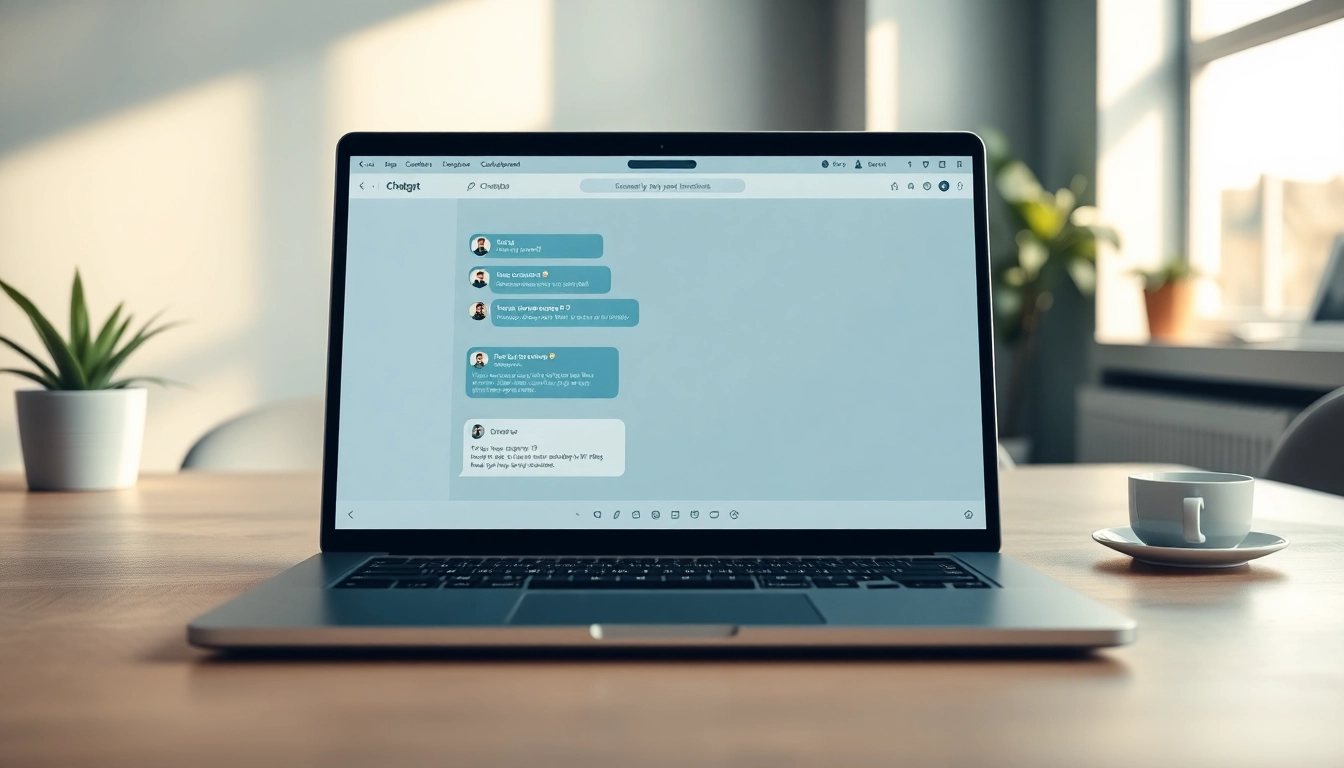Understanding the Role of a Chatbot for Website Engagement
In the digital age, where customer expectations are at an all-time high, businesses are leveraging technology to foster better engagement with their audience. One of the most significant advancements is the use of a chatbot for website interactions. These AI-driven tools enable organizations to provide immediate assistance, scale their communication efforts, and improve overall user experience. Today, we’ll explore how chatbots are revolutionizing online engagement and how businesses can harness their potential.
What Is a Chatbot and How Does It Work?
A chatbot is a software application designed to simulate human conversation through voice commands, text chats, or both. Utilizing natural language processing (NLP) and machine learning algorithms, chatbots can understand user queries and respond in a way that feels intuitive and engaging. Typically, they can be integrated into websites, mobile apps, or messaging platforms, functioning 24/7 to assist users without the need for human intervention.
Benefits of Implementing a Chatbot for Website
Implementing a chatbot on your website comes with numerous benefits that enhance both customer satisfaction and operational efficiencies:
- Immediate Response: Chatbots ensure that customers receive prompt answers to their inquiries, reducing wait times and enhancing user experience.
- 24/7 Availability: Unlike traditional customer service, chatbots are always available, providing users with assistance outside of normal business hours.
- Cost Efficiency: Automating responses helps businesses save on staffing costs, as fewer human resources are needed for real-time customer interaction.
- Data Collection: Chatbots can gather valuable insights from user interactions, enabling businesses to understand customer needs and preferences better.
- Increased Engagement: With their interactive nature, chatbots can help keep users engaged, leading to higher conversion rates and customer loyalty.
Common Use Cases for Chatbots in Online Businesses
Chatbots can be applied in various scenarios across different industries, including:
- Customer Support: Assisting users in troubleshooting issues, answering FAQs, and directing them to appropriate resources.
- Lead Generation: Collecting user information and qualifying leads through conversational interfaces.
- E-commerce: Guiding customers through product selections, facilitating transactions, and offering personalized recommendations.
- Booking and Appointments: Enabling users to schedule appointments or make reservations seamlessly.
Key Features to Look for in a Website Chatbot
Essential Functionalities for Effective User Interaction
The effectiveness of a chatbot largely depends on its functionalities. Here are vital features to consider:
- Natural Language Understanding (NLU): The ability to comprehend user inputs in a human-like manner and interpret the context of conversations.
- Multi-Platform Integration: Capability to work across various platforms, including websites, social media, and messaging apps.
- Personalization: Customizing interactions based on user data and past behavior to enhance relatability and user satisfaction.
- Scalability: Ability to handle numerous interactions simultaneously without compromising response quality.
Integrating AI Capabilities for Enhanced Responses
The integration of AI capabilities elevates the efficiency of a chatbot. Advanced chatbots leverage machine learning to continually improve their understanding and response mechanisms. For example, some chatbots can learn from previous interactions and apply this knowledge to future conversations, increasing the accuracy of their replies over time.
User-Friendly Design Considerations
A user-friendly design can significantly impact the effectiveness of a chatbot. Key design considerations include:
- Intuitive Interface: An easy-to-navigate interface that simplifies the user experience enhances engagement.
- Clear Communication: Using simple language and avoiding technical jargon helps users feel comfortable while interacting with the bot.
- Visual Elements: Incorporating images, quick replies, and buttons can make interactions more engaging and reduce user effort.
How to Implement a Chatbot on Your Website
Choosing the Right Platform for Your Needs
Choosing the right platform is crucial for the successful implementation of a chatbot. The right chatbot platform will align with your business goals, user preferences, and technical capabilities. Factors to consider include:
- Features: Assess whether the platform offers the essential functionalities required for your use case.
- Integration: Ensure the platform can seamlessly integrate with your existing systems, such as CRM and e-commerce systems.
- Cost: Evaluate pricing models to find a solution that fits your budget without sacrificing essential features.
Step-by-Step Guide to Chatbot Installation
Once you have chosen your platform, follow these steps to implement your chatbot effectively:
- Define Your Objectives: Specify what you want to achieve with your chatbot (e.g., customer support, lead generation).
- Design the Conversation Flow: Map out typical user interactions and design a flow that guides users through their inquiries.
- Build Your Chatbot: Use the platform’s design tools to develop your chatbot, incorporating the conversational flow you’ve designed.
- Conduct Testing: Test the chatbot internally to identify any potential issues or improvements in the user experience.
- Deploy and Monitor: Launch your chatbot on the live website and continuously monitor its performance and user interactions.
Testing and Optimizing Chatbot Performance
The testing phase is crucial to ensure that your chatbot performs as intended. Here are some strategies for optimizing performance:
- User Feedback: Encourage users to provide feedback during interactions, which can help identify pain points and areas for improvement.
- A/B Testing: Experiment with different conversation flows or responses to see which performs better in terms of user engagement.
- Analytics: Utilize tracking tools to gather data on user interactions and measure performance metrics, allowing for data-driven optimizations.
Measuring the Impact of Your Chatbot on Website Performance
Key Metrics to Evaluate Chatbot Effectiveness
To determine the effectiveness of your chatbot, measure key performance indicators (KPIs) such as:
- User Engagement: Track interactions and the average time users spend engaging with the chatbot.
- Conversion Rates: Monitor how many user interactions lead to desired outcomes (e.g., purchases, sign-ups).
- Response Accuracy: Assess the percentage of queries successfully resolved by the chatbot on the first attempt.
- Customer Satisfaction Score (CSAT): Survey users to gauge their satisfaction with the chatbot experience.
Tools for Tracking Chatbot Interaction Data
For effective tracking, utilize analytics tools that can integrate with your chatbot. Some popular options include:
- Google Analytics: Use event tracking to monitor chatbot interactions on your website.
- Chatbot Platform Analytics: Many chatbot platforms come with built-in analytics tools that provide insights into user engagement and performance.
- Third-Party Analytics Tools: Consider platforms like Mixpanel or Hotjar to analyze user behavior and conversational performance in more depth.
Real-Life Examples of Successful Chatbot Implementation
Numerous businesses have successfully integrated chatbots into their operations. Notable examples include:
- Sephora: The cosmetic brand employs chatbots to help customers explore products, book appointments, and receive personalized beauty advice.
- H&M: Their chatbot helps customers find clothing items based on style preferences and even processes orders directly through conversations.
- KLM Royal Dutch Airlines: Uses chatbots to provide flight information, bookings, and customer support, enhancing their service efficiency.
Future Trends for Chatbots in Website Development
Emerging Technologies Shaping Chatbot Functionality
The future of chatbots is being significantly shaped by several emerging technologies:
- Advanced AI and Machine Learning: Continuous advancements in AI will empower chatbots to deliver even more nuanced and relevant responses to users.
- Voice Recognition: With the rise of smart speakers, voice-activated chatbots will become more prevalent, allowing for hands-free user interactions.
- Integration with Augmented Reality (AR): Chatbots that can assist in AR applications will enhance user experiences in industries like retail and real estate.
Predicting Changes in User Expectations for Chatbots
As technology evolves, so do user expectations. Future chatbot users are likely to demand:
- Greater Personalization: Users will seek more tailored experiences, driven by comprehensive data analysis and contextual understanding.
- Emotional Intelligence: Incorporating emotional intelligence into chatbot interactions will improve user satisfaction and loyalty.
- Seamless Multi-channel Experiences: Users will expect chatbots to provide consistent experiences across various channels without interruption.
Preparing Your Website for Advanced Chatbot Features
To keep pace with trends and user expectations, businesses should consider the following preparatory steps:
- Stay Updated on Technology: Regularly invest time in researching new chatbot functionalities and user trends to stay competitive.
- Continuous User Feedback: Foster a culture of continuous improvement by actively soliciting user feedback on chatbot experiences.
- Invest in Upgrading Systems: Ensure your website’s infrastructure can support advanced chatbot features and evolving integrations.



